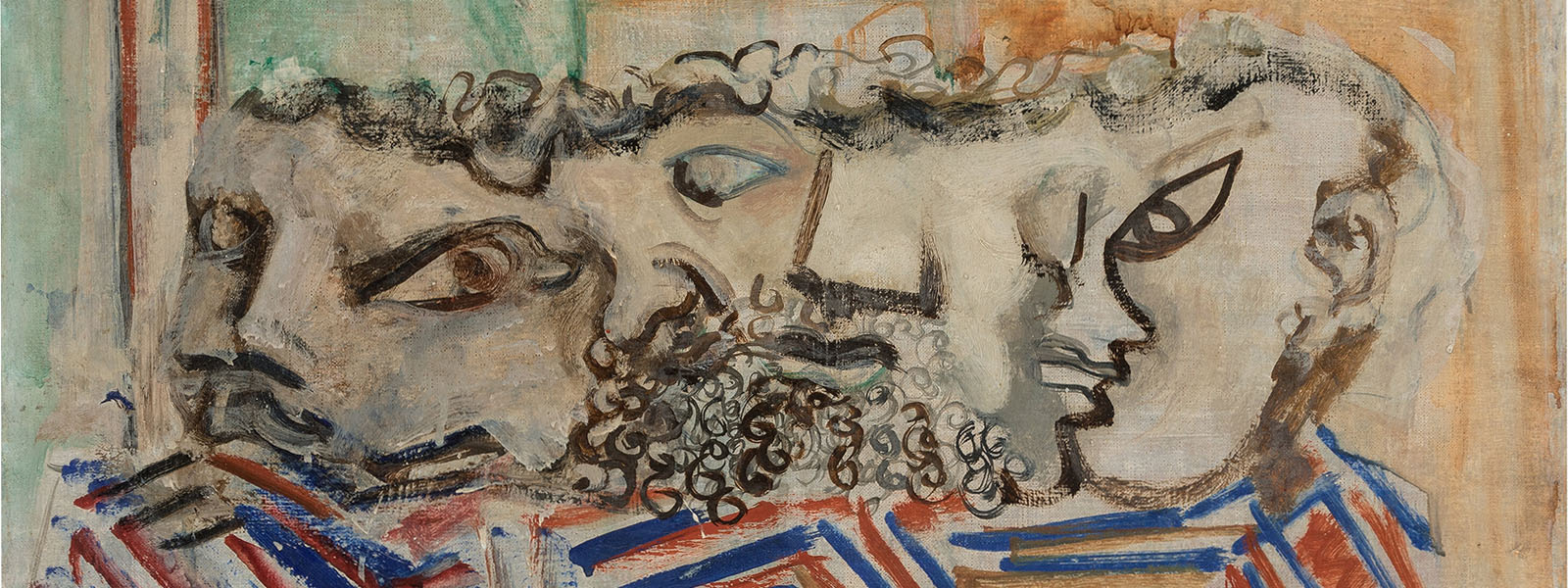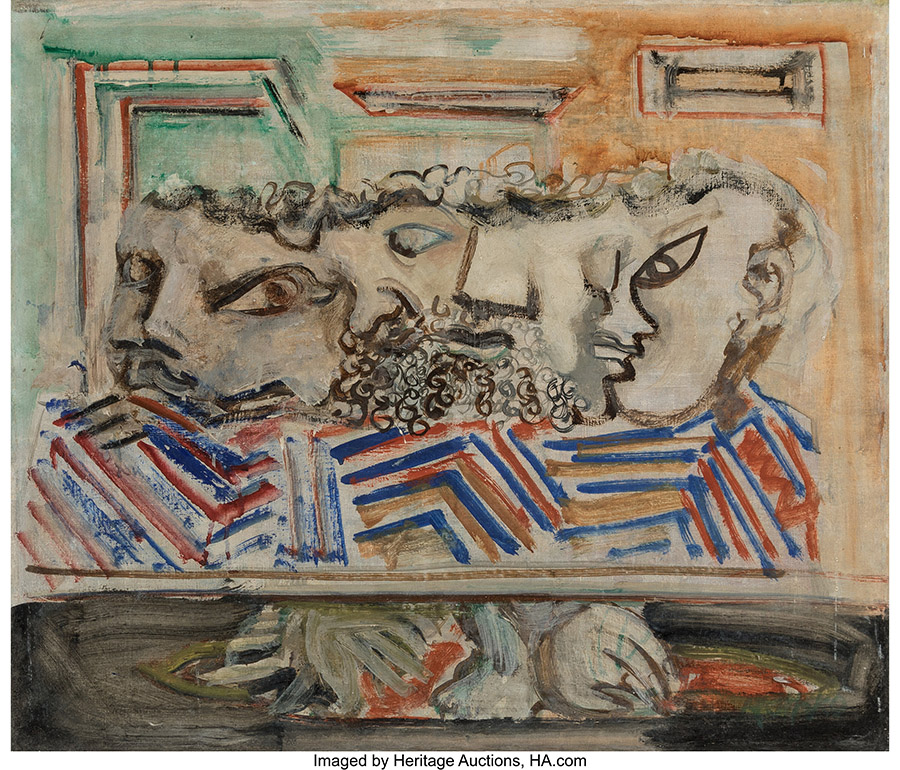EXPRESSIONISTIC WORKS LIKE 1941’S ‘A LAST SUPPER’ WERE HARBINGERS OF THE ARTIST’S SIGNATURE CHROMATIC CREATIONS
By Christina Rees
AMERICAN ART SIGNATURE® AUCTION 8099
Nov. 4, 2022
Online: HA.com/8099a
INQUIRIES
Aviva Lehmann
212.486.3530
AvivaL@HA.com
Mark Rothko is widely known for his color-field paintings, works famous for their power to inspire spiritual contemplation in their viewers, but many of Rothko’s followers are not so familiar with his earlier figurative works. Sprung from the upheaval of World War II, these works set the artist’s moral and aesthetic course for the coming decades. The themes and language of his figurative paintings prove Rothko’s lifelong belief that art can and perhaps should transcend the profane and provide respite from the terror of mortal life.
A key figurative work in Rothko’s evolution as one of America’s foremost Abstract Expressionists is his A Last Supper from 1941, which in a modern painting vernacular depicts five men seated at a table. He created this painting in a burst of inspiration that gripped him between 1939 and 1942, when he, like other artists of the era – especially those of European descent – grappled with the Russian Revolution and the atrocities of the two world wars via radical new forms and languages.
Rothko had arrived in the U.S. as a Jewish boy from a post-revolutionary Russian empire; he landed in New York City at age 20 after dropping out of Yale. Later, enrolled at Parsons School of Design and the Art Students League, he was taught by Arshile Gorky and, more impactfully, Max Weber. It was under Weber that Rothko, a nonpracticing Jew, began to view art as a legitimate form of meaningful modern expression. The still-young Rothko’s paintings reflected his concerns about both the spiritual vacuum faced by humanity and the genocidal atrocities taking place in Europe.
Rothko felt a need to communicate something urgent in the midst of such turmoil. A Last Supper is one of 11 paintings he produced between ’39 and ’42 that depict abstracted heads in a mythological or religious narrative. When he painted A Last Supper, Rothko was increasingly certain of the necessity of myth to redeem a spiritually depleted population. Inspired by Nietzsche’s book The Birth of Tragedy, as well as Greek tragedians, Rothko set about drawing on religious myth to provoke a meaningful response from modern viewers.
A Last Supper shows Rothko engaging in an expressionistic vocabulary that was up to the task of political upheaval and the war-torn moment, while giving us signposts to his later work.”
The title of A Last Supper encompasses two heavily symbolic settings: One is the New Testament story of Jesus’ final meal before his crucifixion; the other is the Old Testament story of the rabbis at Bnei Brak, in which five rabbis discuss the liberation of the Jews from Egypt.
In A Last Supper, you can see how Rothko leaned into the emotionally tensile Expressionism so associated with art during the years surrounding the world wars – itself informed by the Cubism and Surrealism of a rapidly changing Europe. The close gathering of sharp-eyed faces and disembodied hands in the painting recall the tableaus of Max Beckmann and Pablo Picasso; the flattened, dreamlike perspective of the interior space echoes that of George Grosz and Otto Dix. Rothko’s European forebears were considered “degenerates” by the facist right, and at this point, Rothko’s painting language had more in common with them than the sentinel tiers of intense color for which he would later become famous.
Besides A Last Supper, the other key paintings from this body of Rothko’s work are Antigone (circa 1941), which is in the collection of the National Gallery of Art in Washington, D.C., and Crucifix (1941-1942), which belongs to the Jewish Museum in New York City. The three paintings are often cited together by scholars as the trio that most exemplifies Rothko’s determination to reference mythology during that span of his career. A Last Supper is a clear precursor of the more surrealist, increasingly abstract work he began in the mid-1940s, which in turn led to his best-known color-field dramas by the early 1950s.
Rothko’s paintings from this cycle almost never see the market; seven of the 11 known paintings are in major institutional collections. A Last Supper was one of the very few private loans in a recent major Rothko retrospective at Vienna’s Kunsthistorisches Museum, and it is a crucial work in understanding Rothko’s trajectory from figurative to abstract painter; the five figures depicted in the painting are backgrounded by large sections of washy color. A Last Supper shows Rothko engaging in an expressionistic vocabulary that was up to the task of political upheaval and the war-torn moment, while giving us signposts to his later work. More profound abstraction was brewing in Rothko’s head – the seeds of which are here, in this room with these men, during A Last Supper.
Mark Rothko’s A Last Supper, 1941 (estimate: $1,500,000-$2,500,000) will be offered in Heritage Auctions’ November 4 American Art Signature® Auction.
 CHRISTINA REES is a staff writer at Intelligent Collector.
CHRISTINA REES is a staff writer at Intelligent Collector.


